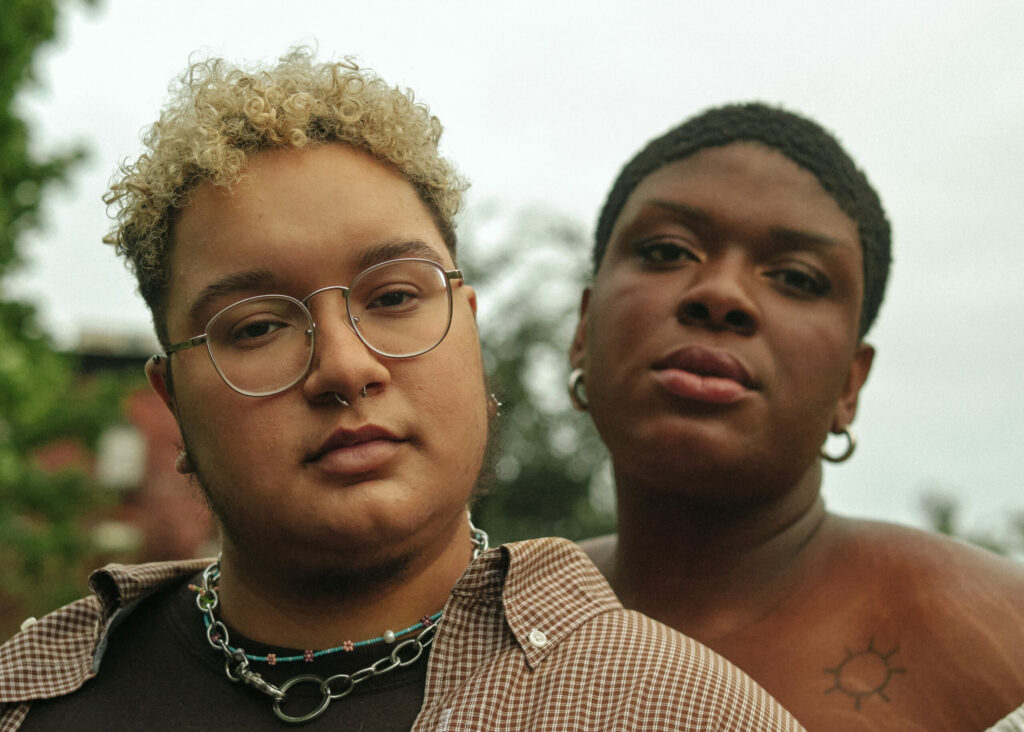Binary people, also known as non-binary individuals, represent a diverse group within the LGBTQ+ community. They do not exclusively identify as male or female and may experience a gender identity that falls outside of the traditional binary understanding. In this article, we will explore the concept of binary people, discuss the signs that may indicate one’s non-binary identity, delve into the challenges they face, and provide information on support resources and strategies for promoting acceptance.
Contents
Understanding Binary People

Binary people, also known as non-binary individuals, refer to individuals whose gender identity does not exclusively align with either male or female. Instead, they may identify as both genders, neither gender, or a different gender altogether. Non-binary identities can encompass a wide range of gender expressions, including but not limited to genderqueer, genderfluid, agender, bigender, and more.
While non-binary identities have gained more visibility in recent years, they have existed throughout history in different cultures and societies. Many indigenous cultures around the world recognize non-binary or third-gender categories, which highlight the fluidity of gender beyond the binary concept. It is essential to appreciate the historical context and diversity of gender identities across cultures to foster understanding and respect for binary people today.
Signs of Being Binary
If you’re referring to signs of identifying as non-binary or genderqueer, rather than strictly identifying as binary (male or female), here are some common signs or indicators that someone may be non-binary:
- Gender Dysphoria: Feeling discomfort or distress with the assigned gender at birth and a desire to be recognized and affirmed as a different gender or outside the gender binary.
- Gender Exploration: Questioning or exploring gender identity beyond the binary categories of male and female.
- Non-Binary Identity Labels: Identifying with terms such as non-binary, genderqueer, genderfluid, agender, bigender, or other gender identities that fall outside the binary.
- Gender Expression: Expressing gender in a way that is not strictly aligned with societal expectations of male or female appearance, clothing, behaviors, or mannerisms.
- Pronoun Preferences: Preferring gender-neutral pronouns like they/them, ze/zir, or other gender-neutral pronouns instead of he/him or she/her.
- Gender Affirmation: Feeling validated, affirmed, and comfortable when others recognize and respect their non-binary identity.
- Discomfort with Gender Roles: Rejecting or feeling uncomfortable with traditional gender roles and expectations associated with masculinity or femininity.
- Intersectional Understanding: Recognizing and acknowledging the intersectionality of gender identity with other aspects of identity, such as race, ethnicity, sexuality, and disability.
It’s important to note that everyone’s journey of self-discovery and gender identity is unique, and these signs are not definitive indicators. It’s always best to listen to and support individuals as they explore and define their own gender identities.
Challenges Faced by Binary People
When discussing the challenges faced by binary people (those who identify strictly as male or female), it’s important to acknowledge that experiences can vary greatly depending on individual circumstances, cultural context, and personal factors. While binary identities are often privileged and supported within societal structures, there are still some challenges that binary individuals may encounter. Here are a few examples:
- Gender Expectations and Stereotypes: Binary individuals may face pressure to conform to societal expectations and stereotypes associated with their assigned gender at birth. This can include expectations around appearance, behavior, career choices, and interests. Deviating from these expectations can lead to judgment, discrimination, or invalidation.
- Limited Gender Expression: Binary individuals may feel restricted by societal norms that dictate how they should express their gender. They may face criticism or misunderstanding if they express themselves in ways that deviate from traditional masculine or feminine norms.
- Gendered Spaces and Activities: Certain spaces, activities, or hobbies may be gendered or segregated based on binary notions of gender. For example, some sports, workplaces, or social events may be perceived as predominantly for either men or women, making it challenging for binary individuals to participate comfortably if they don’t fit into those categories.
- Mental Health and Emotional Well-being: Binary individuals can experience mental health challenges related to the pressure of conforming to gender expectations, dealing with stereotypes, or navigating societal norms. These pressures can contribute to stress, anxiety, body image issues, and self-esteem concerns.
- Invisibility and Erasure: While binary identities are often more widely recognized and acknowledged, this can sometimes lead to the erasure or dismissal of non-binary or gender-diverse experiences. Binary individuals may face challenges in understanding or validating the experiences of non-binary individuals, which can hinder inclusive conversations and support for gender diversity.
Support and Resources for Binary People

Support and resources for binary people (those who identify strictly as male or female) can vary depending on the specific needs and circumstances of individuals. Here are some general sources of support and resources that may be helpful:
- LGBTQ+ Community Centers: Many LGBTQ+ community centers offer support groups, counseling services, educational workshops, and social events that cater to the diverse needs of binary individuals. These centers can provide a safe and inclusive space for connection, resources, and advocacy.
- Counseling and Therapy: Mental health professionals who specialize in gender and sexuality can provide support and guidance to binary individuals. They can help navigate issues related to gender identity, gender roles, societal expectations, and any challenges or concerns that arise.
- Supportive Friends and Family: Having a support network of friends and family who understand and respect your gender identity is essential. Surrounding yourself with supportive individuals who validate and affirm your identity can make a significant difference in your well-being.
- Online Communities and Forums: Participating in online communities and forums specific to gender identity can be a valuable source of support. Connecting with others who share similar experiences can provide a sense of belonging and understanding.
- Educational Resources: Engaging with educational resources on gender studies, gender equality, and gender expression can deepen your understanding of gender-related topics. Books, articles, documentaries, and online courses can provide valuable insights and perspectives.
Promoting Acceptance and Inclusion

Promoting acceptance and inclusion for all individuals, regardless of their gender identity, is crucial for creating a more equitable and compassionate society. Here are some ways to contribute to acceptance and inclusion:
- Education and Awareness: Educate yourself about gender diversity, including non-binary and genderqueer identities, as well as the challenges and experiences of individuals who don’t identify strictly as male or female. Understand that gender exists on a spectrum, and everyone’s identity is valid. Share this knowledge with others to promote understanding and challenge stereotypes.
- Respect Pronouns and Names: Respect people’s chosen names and pronouns. Use the correct pronouns for individuals, including they/them for non-binary individuals, and ask politely if you’re unsure. Avoid making assumptions based on appearance or previous knowledge.
- Create Inclusive Spaces: Foster inclusive environments where individuals of all genders feel safe and valued. This can include workplaces, educational institutions, community centers, and social gatherings. Ensure that policies, practices, and facilities are inclusive and respectful of diverse gender identities.
- Language and Communication: Use inclusive language that encompasses all genders. Avoid gendered assumptions or language when it’s unnecessary. Instead of saying “ladies and gentlemen,” opt for more gender-neutral terms like “everyone” or “folks.” Be mindful of the impact of your words and seek to be inclusive in your communication.
- Advocate for Policies and Laws: Support policies and legislation that protect the rights of all individuals, regardless of their gender identity. Advocate for inclusive policies in schools, workplaces, healthcare systems, and public spaces. Support legal recognition and protection for non-binary and gender-diverse individuals.
Conclusion
Binary people represent a diverse and vibrant community within the broader LGBTQ+ spectrum. Understanding and recognizing their unique experiences and challenges is crucial for fostering inclusivity and acceptance. By promoting education, providing support resources, and advocating for their rights, we can create a more equitable and compassionate society for all individuals, regardless of their gender identity.
Life may sometimes be challenging for people from the LGBTQ community, but Online LGBTQ Counseling can help. Get experienced LGBTQ therapists at PrideMantra: Book a trial LGBTQ therapy session.


